
THE camellias are already blooming in the West Country, where the coming weeks will see the launch onto the market, for the first time in a generation, of some of the region’s lesser-known, but most appealing, country houses.
One of the most enchanting is secluded, Grade II-listed The Manor House at Glanvilles Wootton, which stands in some 88 acres of lush parkland and pasture, gardens and woodland to the east of the village, seven miles south of Sherborne and 12 miles north of Dorchester in the heart of Dorset’s Hardy Country.
For sale for the first time since 1985— at a guide price of £4.75 million through Strutt & Parker (020–7629 7282) and Symonds & Sampson (01305 261008)—the exquisitely symmetrical Georgian manor house, which incorporates an earlier 17thcentury house, has been restored, redecorated and improved by its present owners during their 35-year tenure.
Set in an area renowned for growing timber, notably oak and elm, the quiet village of Glanvilles Wootton—the name of which derives from the ‘wooded place’ mentioned in Domesday and that of the de Glannvyl family who held the manor in medieval times—has long been the centre of a prosperous farming community. To the north and east is the dairy farming country of the Blackmore Vale and, to the west, open chalk downland, with Dorset’s famous Jurassic Coast some 20 miles away. No ‘pigs, planes or pylons’ mar the landscape in these parts.
The original 17th-century section of The Manor House was probably built by George Williams, scion of a Welsh landowning family that was long established in mid Dorset, In 1616, he inherited lands at Glanvilles Wootton and neighbouring Mynterne that he had previously leased from his father, Sir John Williams of Hersingston.
Denne historien er fra March 11, 2020-utgaven av Country Life UK.
Start din 7-dagers gratis prøveperiode på Magzter GOLD for å få tilgang til tusenvis av utvalgte premiumhistorier og 9000+ magasiner og aviser.
Allerede abonnent ? Logg på
Denne historien er fra March 11, 2020-utgaven av Country Life UK.
Start din 7-dagers gratis prøveperiode på Magzter GOLD for å få tilgang til tusenvis av utvalgte premiumhistorier og 9000+ magasiner og aviser.
Allerede abonnent? Logg på

Give it some stick
Galloping through the imagination, competitive hobby-horsing is a gymnastic sport on the rise in Britain, discovers Sybilla Hart

Paper escapes
Steven King selects his best travel books of 2024
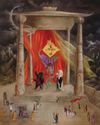
For love, not money
This year may have marked the end of brag-art’, bought merely to show off one’s wealth. It’s time for a return to looking for connoisseurship, beauty and taste

Mary I: more bruised than bloody
Cast as a sanguinary tyrant, our first Queen Regnant may not deserve her brutal reputation, believes Geoffrey Munn
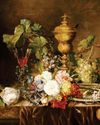
A love supreme
Art brought together 19th-century Norwich couple Joseph and Emily Stannard, who shared a passion for painting, but their destiny would be dramatically different
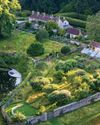
Private views
One of the best ways-often the only way-to visit the finest privately owned gardens in the country is by joining an exclusive tour. Non Morris does exactly that

Shhhhhh...
THERE is great delight to be had poring over the front pages of COUNTRY LIFE each week, dreaming of what life would be like in a Scottish castle (so reasonably priced, but do bear in mind the midges) or a townhouse in London’s Eaton Square (worth a king’s ransom, but, oh dear, the traffic) or perhaps that cottage in the Cotswolds (if you don’t mind standing next to Hollywood A-listers in the queue at Daylesford). The estate agent’s particulars will give you details of acreage, proximity to schools and railway stations, but never—no, never—an indication of noise levels.
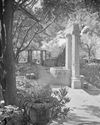
Mission impossible
Rubble and ruin were all that remained of the early-19th-century Villa Frere and its gardens, planted by the English diplomat John Hookham Frere, until a group of dedicated volunteers came to its rescue. Josephine Tyndale-Biscoe tells the story
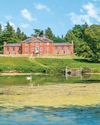
When a perfect storm hits
Weather, wars, elections and financial uncertainty all conspired against high-end house sales this year, but there were still some spectacular deals

Give the dog a bone
Man's best friend still needs to eat like its Lupus forebears, believes Jonathan Self, when it's not guarding food, greeting us or destroying our upholstery, of course